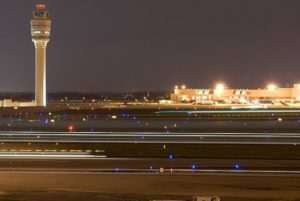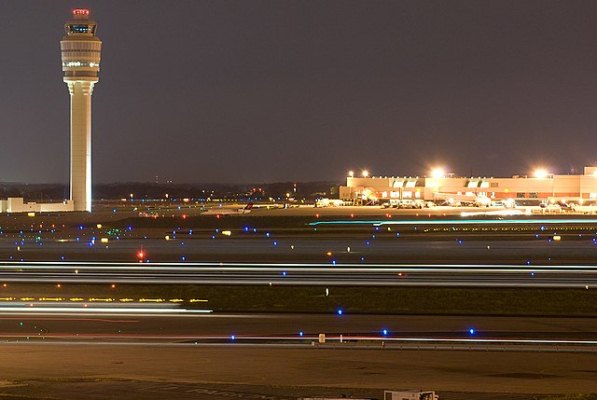 In spite of protectionist policies, airport cargo volume and passenger traffic are expected to continue to rise rapidly over the next two years, propelled by various elements ranging from affordable air travel to rapid urbanization, according to the latest edition of the World Air Traffic Report from Airports Council International (ACI).
In spite of protectionist policies, airport cargo volume and passenger traffic are expected to continue to rise rapidly over the next two years, propelled by various elements ranging from affordable air travel to rapid urbanization, according to the latest edition of the World Air Traffic Report from Airports Council International (ACI).
“When we look at the traffic data over the last two decades, we get a sense that aviation has entered a new era of unprecedented growth,” said Angela Gittens, director general of ACI World. “Historically low jet fuel prices, affordable air travel through the widespread adoption of the low-cost carrier business model on many short- and medium-haul routes have acted as catalysts in stimulating air transport demand.
“Moreover, rapid urbanization, especially in major emerging markets, coupled with the intensification of competition within the air transport value chain continue to re-shape the industry landscape to the ultimate benefit of the end-user—the passenger.”
Air freight growth
Air cargo, following on its surge in the latter half of 2016 and into 2017, is seen to continue to rise at rates averaging 7.4% worldwide. Over a two-year period, this growth will add up to an estimated 16.9 million additional tonnes by December 2018, of which almost 50% will be handled by the Asia-Pacific region, increasing the region’s total market share to just above 39%, said ACI.
It also forecasts that passenger traffic will continue to rise rapidly in the short term, based on a projected compounded annual growth rate (CAGR) of 6.5% per year. Domestic traffic will continue to climb steadily over the next two years—especially in the Asia-Pacific, European, and North American regions—achieving a global CAGR of 5.3%. Nonetheless, gains will come primarily from international traffic, featuring a two-year CAGR of 8.4%.
Still, there are several impediments to the continued rise in demand. Specifically, these are related to geopolitical unrest, terrorism, and threats to security in certain parts of the world. Physical capacity considerations and potential bottlenecks in air transport infrastructure also pose challenges in accommodating future air transport demand.
Finally, protectionist policies that retreat from further economic integration and air transport liberalization could have adverse contractionary effect on the air transport industry.
“In this new era of geopolitical strife and terror, coupled with the wave of protectionist rhetoric that has swept many major economies, clear downside risks have revealed themselves as we end 2017 and approach 2018. Even with the prevailing strength in consumer confidence across major economies and relatively sound economic fundamentals as our backdrop, cautious optimism should be the prevailing sentiment in our industry,” Gittens concluded.
Cargo resurgence
Air cargo markets experienced a revival in the second half of 2016 to surpass 110 million metric tonnes by the end of the year and achieving growth of 4%. Despite the backdrop of economic uncertainty regarding trade policies in the United States and the United Kingdom, two of the world’s largest aviation markets, business confidence has persevered into 2017.
“International trade continued to make gains on the cyclical recovery in the global economy, which translated into growth in air freight volumes. Inventory build-ups, augmented export orders and a strengthening of consumer demand reflected in increased online purchases are important drivers in the near-term,” said the report.
On a year-to-date basis, air freight volumes (excluding mail), posted an astounding increase of over 8% in volumes for the first half of 2017.
In 2016, worldwide airport cargo increased 4% in 2016 to 110 million metric tonnes, with mixed levels of growth across all six regions. Hong Kong and Memphis take the first and second ranks, respectively, for the busiest air cargo airports with 4.6 and 4.3 million metric tonnes in 2016.
Airports in the Asia-Pacific region handled the largest amount of air cargo during 2016 with 43.4 million metric tonnes, up 5.4% over 2015. This is followed by North America, Europe Middle East, Latin America-Caribbean, and Africa.
The world’s fastest growing airports handling over 250,000 metric tonnes of air cargo during 2016 are Moscow (up 28.8% over 2015), Doha (up 20.8%), and Hanoi (up 18.2%).
The world’s busiest airports in international freight traffic are Hong Kong, Incheon, and Dubai.
Passenger numbers also up
Meanwhile, the report noted that on a year-to-date basis, passenger traffic jumped 6.6% for the first half of 2017 and will undoubtedly exceed the 8 billion mark in 2017.
In 2016 worldwide airport passenger numbers increased 6.5% to almost 7.7 billion, registering increases in all regions except Africa, which had a slight decrease of 0.4% due to the region’s 1.7% decrease in international passenger.
Last year, the highest number of passengers traveled through airports in the Asia-Pacific region, reaching 2.73 billion, up 10.6% over 2015.
Photo: Omoo





